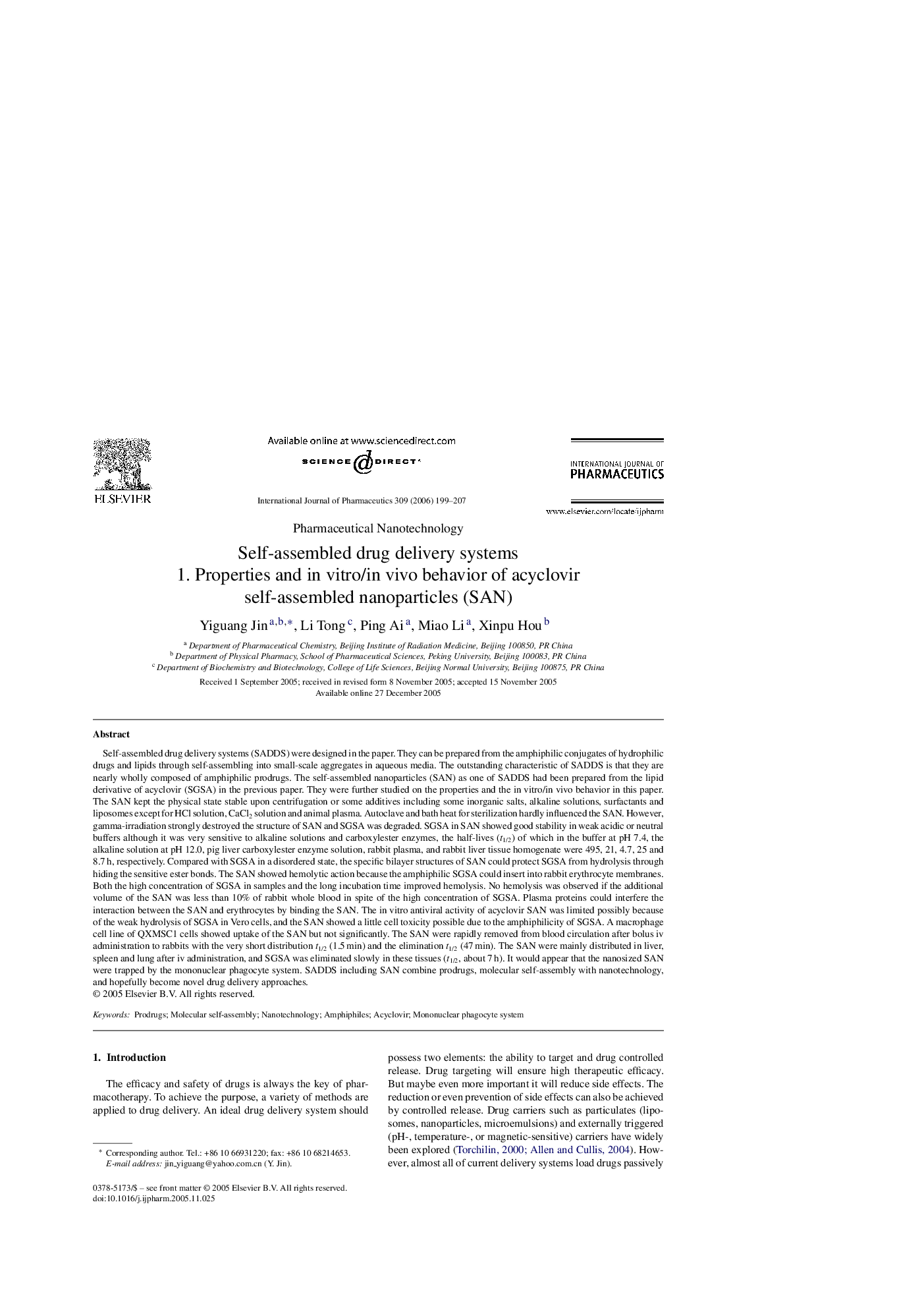| کد مقاله | کد نشریه | سال انتشار | مقاله انگلیسی | نسخه تمام متن |
|---|---|---|---|---|
| 2507142 | 1557543 | 2006 | 9 صفحه PDF | دانلود رایگان |

Self-assembled drug delivery systems (SADDS) were designed in the paper. They can be prepared from the amphiphilic conjugates of hydrophilic drugs and lipids through self-assembling into small-scale aggregates in aqueous media. The outstanding characteristic of SADDS is that they are nearly wholly composed of amphiphilic prodrugs. The self-assembled nanoparticles (SAN) as one of SADDS had been prepared from the lipid derivative of acyclovir (SGSA) in the previous paper. They were further studied on the properties and the in vitro/in vivo behavior in this paper. The SAN kept the physical state stable upon centrifugation or some additives including some inorganic salts, alkaline solutions, surfactants and liposomes except for HCl solution, CaCl2 solution and animal plasma. Autoclave and bath heat for sterilization hardly influenced the SAN. However, gamma-irradiation strongly destroyed the structure of SAN and SGSA was degraded. SGSA in SAN showed good stability in weak acidic or neutral buffers although it was very sensitive to alkaline solutions and carboxylester enzymes, the half-lives (t1/2) of which in the buffer at pH 7.4, the alkaline solution at pH 12.0, pig liver carboxylester enzyme solution, rabbit plasma, and rabbit liver tissue homogenate were 495, 21, 4.7, 25 and 8.7 h, respectively. Compared with SGSA in a disordered state, the specific bilayer structures of SAN could protect SGSA from hydrolysis through hiding the sensitive ester bonds. The SAN showed hemolytic action because the amphiphilic SGSA could insert into rabbit erythrocyte membranes. Both the high concentration of SGSA in samples and the long incubation time improved hemolysis. No hemolysis was observed if the additional volume of the SAN was less than 10% of rabbit whole blood in spite of the high concentration of SGSA. Plasma proteins could interfere the interaction between the SAN and erythrocytes by binding the SAN. The in vitro antiviral activity of acyclovir SAN was limited possibly because of the weak hydrolysis of SGSA in Vero cells, and the SAN showed a little cell toxicity possible due to the amphiphilicity of SGSA. A macrophage cell line of QXMSC1 cells showed uptake of the SAN but not significantly. The SAN were rapidly removed from blood circulation after bolus iv administration to rabbits with the very short distribution t1/2 (1.5 min) and the elimination t1/2 (47 min). The SAN were mainly distributed in liver, spleen and lung after iv administration, and SGSA was eliminated slowly in these tissues (t1/2, about 7 h). It would appear that the nanosized SAN were trapped by the mononuclear phagocyte system. SADDS including SAN combine prodrugs, molecular self-assembly with nanotechnology, and hopefully become novel drug delivery approaches.
Journal: International Journal of Pharmaceutics - Volume 309, Issues 1–2, 17 February 2006, Pages 199–207